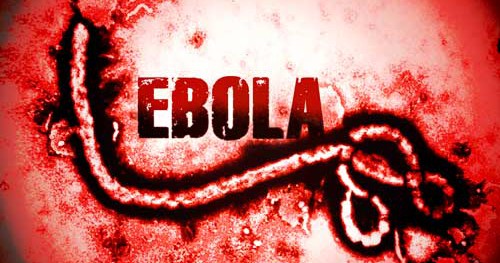
A patient was diagnosed with Ebola in the United States for the first time, the U.S. Centers for Disease Control and Prevention (CDC) announced on Tuesday.
The Ebola outbreak has already infected thousands of people in West Africa — including several American aid workers who were diagnosed there and then brought back to the United States for treatment. But this is the first person to be diagnosed with the disease inside US borders rather than abroad.
The emergence of the virus in the U.S. is hardly unexpected. In fact, scientists had previously predicted a 1 in 5 chance that Ebola would reach the country by the end of the month.
Right now, the CDC and local health authorities are working to find and follow-up with all the people who would have come into contact with the patient. They are not concerned about the people who shared this man’s flight, since he was not symptomatic then and the disease can only be contracted by someone exhibiting symptoms of the disease.
“Remember: Ebola doesn’t spread before someone gets sick, and [the U.S. patient] didn’t get sick until four days after he got off the airplane,” said CDC Director Dr. Thomas Frieden. “So we do not believe there is any risk to anyone who was on the flight at that time.”
The CDC gave more details about the case during a televised press conference on Tuesday evening. Here’s what we know so far:
The timeline
According to Dr. Frieden, the infected patient was traveling from Liberia, leaving on September 19th and arriving in the U.S. on September 20th. During that time-frame, the patient had no symptoms of the disease. However, he developed symptoms on September 24th, and then sought care on September 26th. On September 28th – four days after initial symptoms appeared – the patient was admitted to Texas Presbyterian Hospital in Dallas and placed in an isolation ward.
When asked why the patient was sent home after his initial visit, Dr. Frieden explained that the initial symptoms of Ebola virus appear very similar to common illnesses, adding that his office has encouraged emergency department physicians to be particularly careful to take travel histories and conduct rapid testing on anything resembling the illness. Despite the delay in care, he stated that he had “no doubt that we’ll stop this in its tracks in the U.S.”
The patient
Dr. Frieden didn’t disclose much information about the patient other than to say, “The individual was here to visit family who live in this country.” Dr. Frieden later indicated the patient was male when he modified the comment to say, “He was visiting family members and staying with family members who live in this country.”
Officials did confirm that the patient was critically ill and that the hospital was discussing experimental therapies with the patient’s family and drug providers.
Several of the patient’s family members in the US might have been exposed to him while he was ill, and “two or three” other community members might have been exposed too, Dr. Freiden added.
The public health response
Zachary Thompson, director of Dallas County Health and Human Services, is leading the public health effort to reach out and interview anyone the patient may have been in contact with in the time that he was showing symptoms, but had not yet been checked into the hospital.
Anyone who had direct contact with him during that time will be assessed and monitored for 21 days to see if symptoms develop. If they do, their diagnosis triggers the same public health effort: identify everyone they’ve been in contact with since symptoms started, and monitor them.
“We think, again, it’s a small framework that we’re looking at in terms of the number of people, but once we get additional information, we’ll report out to the public,” said Thompson. The CDC also has a support team en route to Dallas to help state, local and hospital officials monitor those who had direct contact with the patient.
The risk of U.S. Ebola outbreak
“It is certainly possible that someone who had contact with this individual could develop Ebola in the coming weeks,” said Dr. Frieden. However, while public health officials are casting a wide net to err on the side of caution, Dr. Frieden re-emphasized that the Ebola virus was not a significant threat to the general U.S. population, and that any hospital with an isolation unit is equipped to isolate and care for someone who has been diagnosed with Ebola.
“It’s a virus that’s easy to kill by washing your hands, and easy to stop by using gloves and barrier precautions,” said Dr. Frieden. For instance, he said, the U.S. has seen several patients with viral hemorrhagic fever in the past, and standard hygiene practices prevented its spread — even in the case of one patient with Marburg virus who was hospitalized and underwent surgery before being diagnosed.
The global situation
Ebola can’t be spread through the air; only direct contact with the body fluids (including urine, saliva, feces, vomit, and blood) of a patient who is showing symptoms will spread the disease. It has a high case fatality rate; by last count, the current outbreak has infected more than 6,500 people and resulted in more than 3,000 deaths, but a recent analysis from the World Health Organization found that the fatality rate may be as high as 80 percent in this outbreak. A vast (but unknown) number of hidden cases and undocumented deaths is likely masking the true size of the outbreak, the WHO said.
Currently, the CDC has 130 staffers spread throughout West African countries to help support public health efforts to contain the virus, while a team has been dispatched to Texas to oversee the response there. “I have no doubt that we’ll stop this in its tracks in the U.S.,” Dr. Frieden concluded. “But I also have no doubt that as long as the outbreak continues in Africa, we need to be on our guard.”
